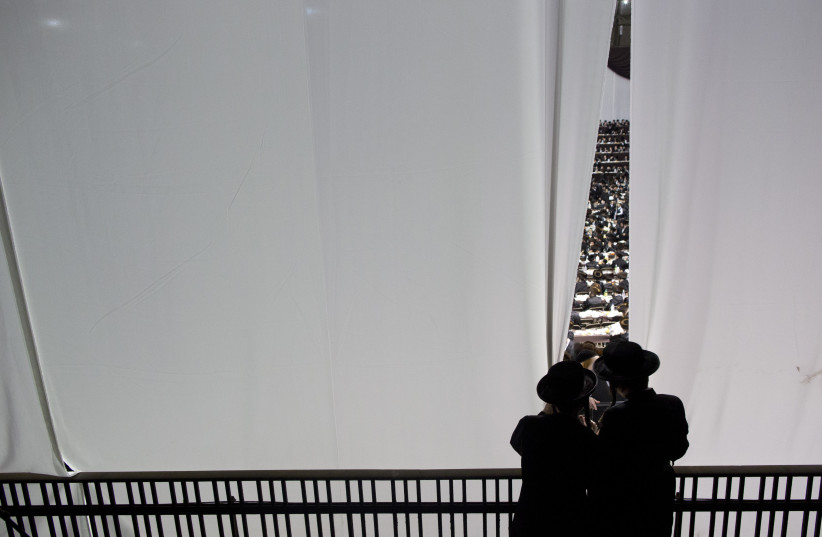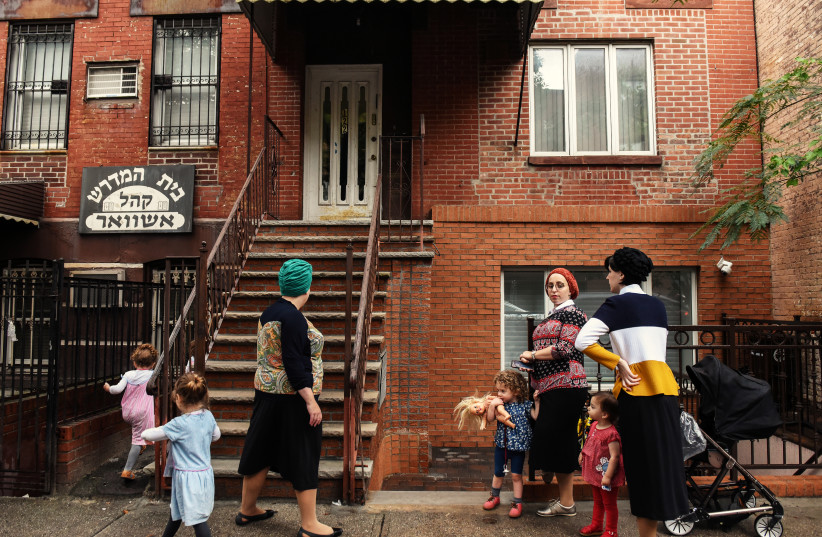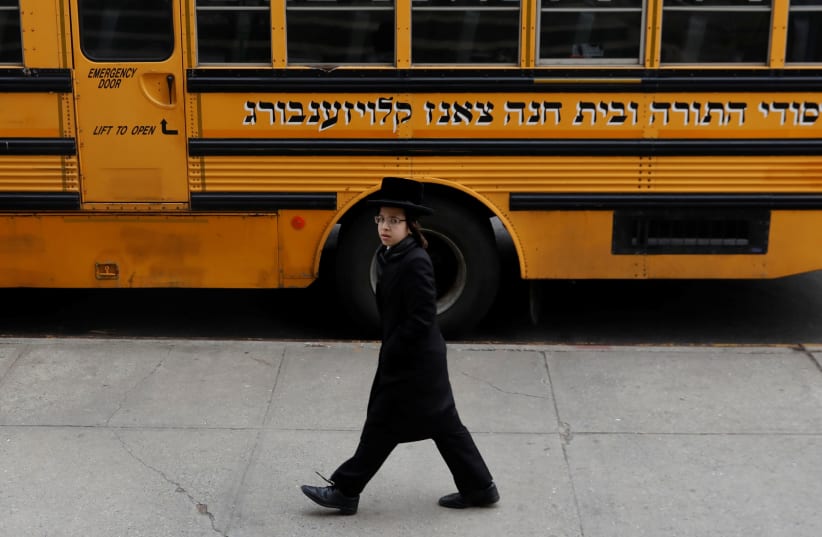The private hasidic school system in New York State has systematically denied a basic education to generations of children, trapping them in a cycle of joblessness and dependency, an investigation by The New York Times has revealed.
A year-long investigation into the New York hasidic school system was conducted by the Times, during which they interviewed over 275 people, translated dozens of Yiddish documents and studied troves of data. Their findings reveal that hasidic private schools in New York have been perpetuating a "cycle of joblessness and dependency" while collecting large amounts of public funds.
The report noted that when the Central United Talmudical Academy, the largest of these schools, began administering standardized reading and math tests to over 1,000 students – required by the state in order to receive state funding – every single student failed. And when standardized tests were given to students at almost a dozen other hasidic schools, they recorded similarly poor results.
"The students in the boys' schools are not simply falling behind. They are suffering from levels of educational deprivation not seen anywhere else in New York."
New York Times investigative report
Despite this – and the fact that state-funded public schools often struggle with mismanagement or a lack of funding – New York's hasidic schools have received $1 billion in government funding over the last four years.


Education standards by gender
Hasidic schools are strictly segregated by gender, and the starkest failings can be found in the over 100 schools for boys across the state. According to the report, these schools "turn out thousands of students each year who are unprepared to navigate the outside world," which helps to push poverty rates in hasidic neighborhoods to some of the highest in New York.
On average, the Times found, the boys' schools spend just 90 minutes a day, four times a week on reading and math skills, only for children between the ages of 8 and 12. Some of the schools actively discourage secular study at home, disallowing students from owning English language books. Some have even started requiring parents to promise that no English will be spoken inside the home.
Instead of secular studies, the male students are drilled "relentlessly, sometimes brutally," during hours of religious studies lessons, all conducted in Yiddish.
"The students in the boys' schools are not simply falling behind," said the Times. "They are suffering from levels of educational deprivation not seen anywhere else in New York."
Speaking to over three dozen current and former teachers across the state, the report's authors found that "most of the thousands of boys who passed through their classrooms over the years left school without learning to speak English fluently, let alone read or write at grade level."
Another teacher provided the Times with hundreds of pages of worksheets from the past five years that showed that 12-year-olds, in their final year of secular education, could not spell even the most basic words.
While teachers reported that boys fared slightly better in math than they did in English, with most being able to add and subtract, and some being able to multiple and divide, very few boys progressed past the basics.
For girls, there is slightly more hope of receiving a moderately rounded secular education, as they are forbidden from studying many of the Jewish texts studied by boys. However, the report still found that of the female students who took standardized tests over the last year, 80% did not pass their exams.
Physical abuse by religious studies teachers
And it isn't just the lack of secular education that has people concerned. Through hearing testimonies and reading reports, the Times found that during religious study, boys are regularly smacked, slapped, and kicked by their teachers, creating an environment of fear. In some schools, the beatings have been severe enough for boys to call 911 to report the incidents.


Because the New York State prohibition on corporal punishment is only limited to public schools, some private schools – hasidic ones among them – still employ these methods of punishing students. However, because there is no law explicitly permitting the use of corporal punishment in private schools, parents may have to consent to this form of punishment through a waiver when the child enrolls with the school.
Speaking with the Times, recent graduate Chaim Widger recounted the time that he, at the age of seven, had been called to the front of the classroom after perceived misbehavior, and was smacked with a ruler wrapped in electrical tape in front of all his classmates.
In conversation with the reporters, more than 35 men who either attended or worked in hasidic schools over the last decade stated that they saw teachers hit students with rulers, belts and sticks.
One man recounted how, when he was four years old, he was kicked so hard by a rabbi that he flew under the table, and another spoke about watching a teacher push a classmate to the ground before stomping on him repeatedly.
“I had no knowledge really of how to speak to people. I thought I was all on my own. That’s the idea I was given in school.”
Mendy Pape
Neither of the schools in question had records of these incidents and declined requests to comment.
Despite some hasidic schools changing their policies in recent years and requesting that teachers be "less violent" in disciplining students, dozens of parents told the Times that their sons had been hit at least once. Some even said that they had resorted to protecting their children by "tipping" the teachers around $100 a year.
Hasidic schools "not a monolith"
There are an estimated 200,000 hasidic Jews in New York, comprising over a dozen distinct sects, each one with its own schools, meaning that despite the findings mentioned above, there is not a central hasidic school system.
The Times report stresses that hasidic boys' schools are not a monolith and that their attitudes toward nonreligious education can vary from neighborhood to neighborhood. A few schools do offer science and social study classes, and one even holds an annual spelling bee. But these schools are the exception, not the rule, it said.
The impact on students
After attending hasidic schools, men who choose to leave their communities are often severely underequipped to live in the outside world, the Times found.
Speaking to Joseph Kraus, who ran away from his home in Kiryas Joel at the age of 17, the Times heard firsthand about the difficulties of integrating into modern society after growing up completely closed off from the world.


After leaving his parents and five siblings behind, Kraus took a taxi to a local mall, bought jeans and T-shirts for the first time, and headed to a youth shelter. Over the next 18 months he enrolled in remote public school classes but was barely able to use a computer or understand his teachers, he told the Times.
“I feel like I have no point of advantage,” said Kraus, now 19. “I have big hopes to be really successful. I feel like at this point it’s really stupid to talk about.”
Further interviews with dozens of men told of similar stories, despite leaders of the communities they left behind vehemently denying that there is any truth to the matter.
"Some [men] said they remained in the community, awash in debt and supporting their families with government welfare," reads the report. "Several said the only job they could find was at the yeshiva they attended. Others spoke while unloading trucks or stocking shelves and choked back tears as they described what their lives had become."
Mendy Pape, who left his community in Crown Heights in 2010, spoke with the Times, recounting the struggles he faced after leaving, which included an attempt to end his own life.
“I didn’t have a job, I didn’t have a bank account, I didn’t have references. I didn’t have any of that because I didn’t even know what any of that was,” said Pape, who is now a nursing school graduate. “I had no knowledge really of how to speak to people. I thought I was all on my own. That’s the idea I was given in school.”
